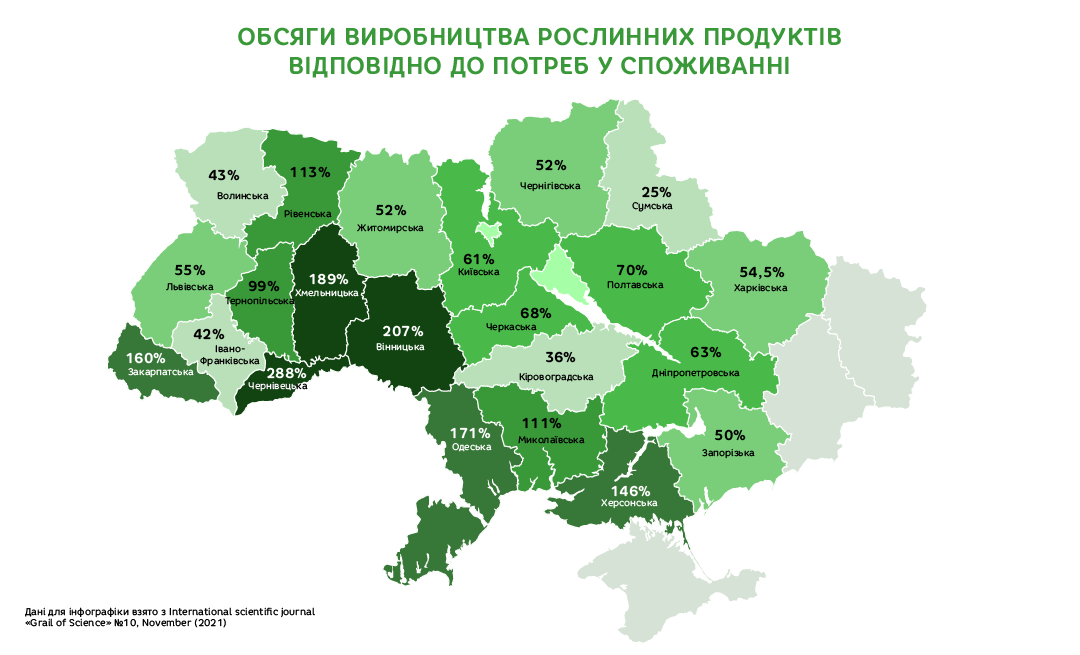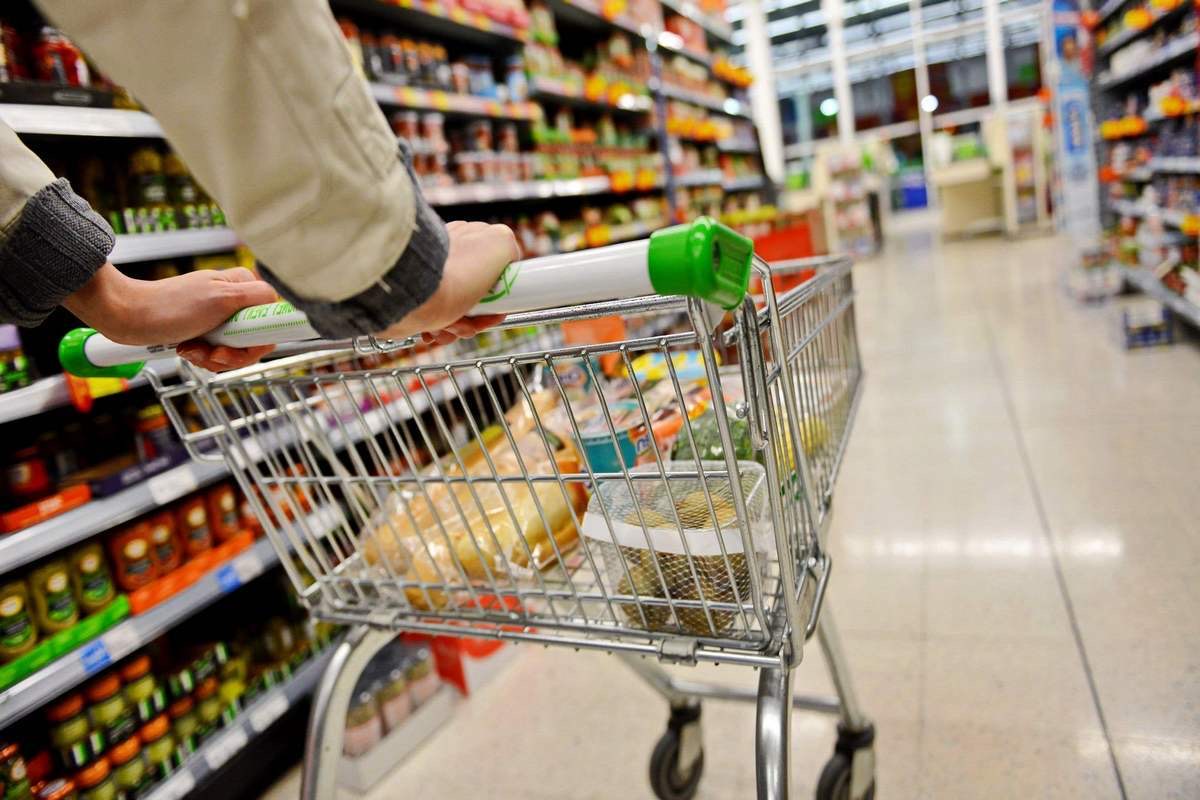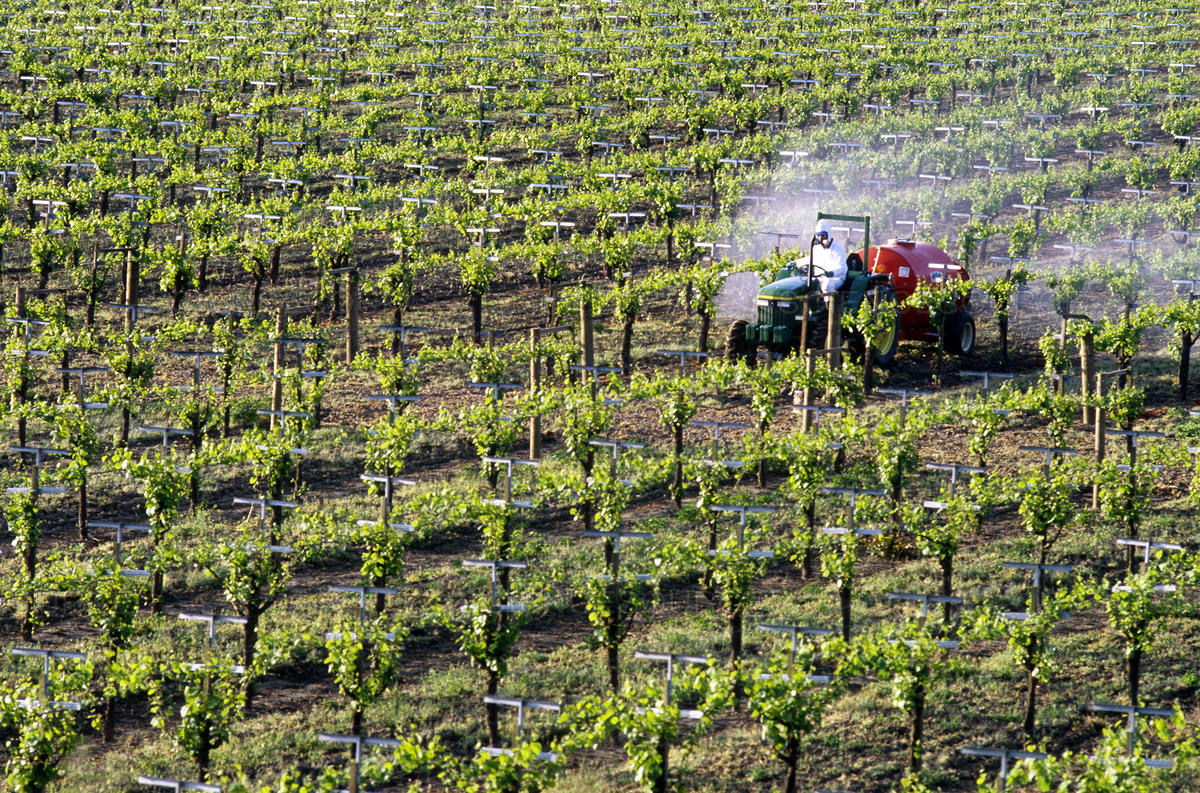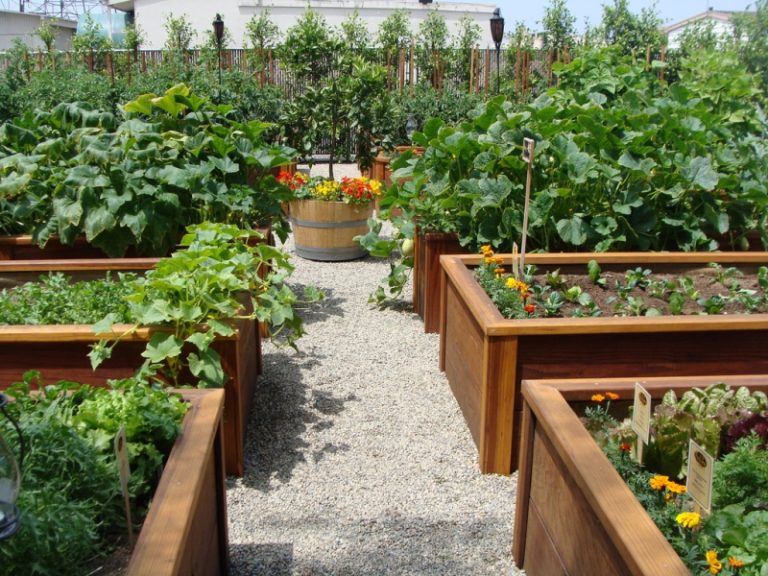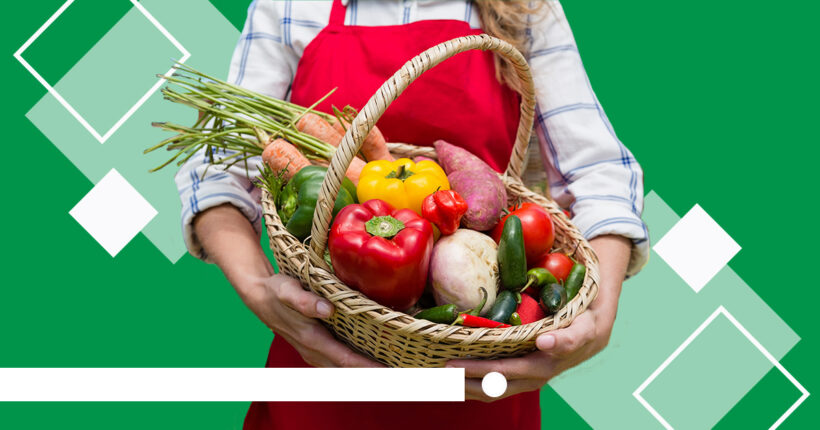
The two main problems of our time are malnutrition in all its forms and the degradation of the environment and natural resources. Both are happening at an accelerated pace. The number of people suffering from malnutrition has been slowly rising for several years in a row, and at the same time, the number of overweight and obese people around the world is growing at an alarming rate. There are also problems with the food system in Ukraine: statistics show that Ukrainians eat too much flour and not enough vegetables.
It should be noted that the consumption of products per capita is influenced by the volume of its production, population, purchasing power, exports, and imports. From the food security point of view, it is important to meet the needs using our own production. But is it possible in Ukraine? The results of last year's research show that the population of Mykolayiv, Odesa, and Kherson regions grow even more plants than they need for their own support: this is due to the economic orientation of districts to sell plant products to the other regions of Ukraine and exports. The situation is slightly worse in the northern, eastern, some western, and central regions. For example, in the Zaporizhzhia region, the population produces twice as fewer vegetables and fruits as the norm, and in the Sumy region, four times less.
However, if we calculate how much the average population provides itself with fruit plants, we get a figure of 98%. Of course, this is only approximate data. It does not mean that the products produced are equally affordable for people in different areas. Or that people do not follow a balanced diet very carefully. If we talk about nutrition problems in general, traditionally, in Ukraine, there is excessive consumption of oil, potatoes, and bakery products, due to the relatively low population solvency. The consequences of an unbalanced diet are an increase in mortality and a decrease in life expectancy. Instead, according to the WHO, in countries where the population eats a lot of vegetables and fruits, mortality from circulatory diseases is declining. A well-balanced diet significantly reduces the risk of diabetes and cancer mortality.
Because of the war, we will consume even fewer vegetables and fruits
It should be noted that if the trends that took place before 2013 continue, the projected level of fruit and berry consumption in 2022, according to the State Statistics Service, should be 72.4 kg, which is 19.5% less than the rational norm. However, we may not expect even such figures, and based on past experience, the number will be much lower. The problem is a full-scale war that has prevented farmers from sowing certain crops, cultivating some fields, and entering the occupied territories.
For example, in 2014–2016, as a result of the annexation of the Autonomous Republic of Crimea, the decline in production volumes significantly affected consumption indicators and values, as a result of which vegetable consumption decreased to 55% of the norm. In 2019, there were positive changes – consumption increased and reached 58.7 kg/person (65.2% of the rational norm). The projected consumption according to this model in 2022 was to be 66.4 kg per person/per year or 73.8% of the norm. But we should not forget about these figures, because such a forecast was given before the start of a full-scale war. Accurate forecasts cannot be made yet. But we must be prepared for fewer vegetables on the shelves and higher prices for them, and, accordingly, for less consumption of vegetables by the population. What to do in this case? How to meet the need for vegetables and enable Ukrainians to get enough fiber and vitamins in their daily diet?
What is the solution?
Changing eating habits is a significant problem for cultural, political, and economic reasons. It will require public authorities, businesses, and individuals to take actions that are usually beyond the standard framework. These actions will include measures to change supply and demand, and the transformation of the social norms toward abandoning the meat diet. According to a report by the Food and Agriculture Organization of the United Nations – FAO, difficulties in changing eating habits to healthier and more environmentally friendly are faced in almost all countries:
"There is no perfect solution to the problem of creating a sustainable food system. On the contrary, many changes need to be made to different sectors of the food system," the report said.
Successful solutions to meet needs are not always environmentally friendly. In Kenya, for example, cows and other ruminants are an integral source of food and economic security, especially in rural communities. But they are also a major cause of environmental damage. In Brazil, beef, soybeans, and sugar are the core agricultural and export commodities, but the growth of their production leads to high greenhouse gas emissions and biodiversity loss, especially in the Atlantic Forest, Serrada, and the Brazilian Amazon. In Vietnam, fish is an important source of food and economic security, but the sustainability of Vietnamese fisheries is under threat due to historical overfishing and proposed dam construction. The medal has two sides, and we also face this kind of problem in Ukraine.
How to provide Ukrainians with vegetables?
A sustainable nutrition system can be established by giving people the opportunity to consume sufficient local vegetables, greens, and fruits due to the affordability of such food for them. End-user products must be inexpensive and safe. Maryna Sadkina, project manager and analyst at the Ekoltava NGO, explains that there are three ways to grow plants: on large farms, and two more — on a small plot of land using the "standard" or permaculture method. Each of these methods has both disadvantages and advantages.
Vegetables from the store VS. Vegetables from your own garden
Large farms operate on a "scale effect," where the costs of growing, processing, harvesting, and transporting crops are reduced by purchasing large batches of fertilizers, pesticides, fuel, etc. The efficiency of different treatment use is higher in larger areas. In such cultivation, high-yielding varieties are selected, and processes are automated, thus increasing the efficiency of costs, time, and labor. The products are systematically treated against pests to retain a marketable appearance. All this together allows you to make the cost of grown vegetables and fruits lower.
"As a result, we have high yields and attractive products at an affordable price. However, it does not make them equally safe and useful!" the expert notes. All because the disadvantages of this method of cultivation far outweigh the advantages:
- There is a process of soil degradation and contamination of groundwater with pesticides, which leads to the flowering of water in terrestrial reservoirs;
- Air emissions and loss of pollinators (often insects die due to pesticide treatment).
- Responsibility for waste is partially transferred to the final consumer.
- Due to the lack of landfills and municipal composting stations in most communities, all residues will rot in disorganized landfills and lead to their burning, soil, groundwater, and air pollution.
As to private households, there are two possible approaches:
The "standard" method is when several varieties of vegetables and greens are planted in a small backyard. It is how we used to grow plants in dachas or small towns. And here gardeners face a whole range of problems:
- Crop rotation is usually not carried out, and it is irregular or insignificant;
- The soil is degraded and infected with fungi, harmful microorganisms, and insects, which annually lead to the loss of most of the crop or its damage;
- Periodic watering, treatment of diseases and pests of terrestrial parts of plants with safe and ineffective solutions according to folk recipes or different pesticides for certain plant varieties is necessary. In this case, the cost of money and time increases, and the risk of pests from neighboring uncultivated crops remains
As a result, explains Marina Sadkina, we have more or less safe-to-eat home vegetables but low yields with high labor costs. Pesticides still need to be used to preserve the harvest, and resources are being used inefficiently. "Standard" home cultivation loses cost-effectiveness and yield compared to growing vegetables on large farms, but contributes to safer and healthier vegetables with less environmental impact. However, there is a third way to grow plants. We see the future in it.
So how to grow plants properly?
One should create a "smart" bed
Effective high-yield vegetable growing is possible even on your small garden plot using permaculture approaches and effective microorganisms. At the same time, the basic formation of such a "smart" bed requires effort and time, which are then covered by saving labor and money during the safe vegetables' direct cultivation.
The permaculture method is to create efficient closed-loop beds. With this approach, the plants grow in the most natural conditions, without pesticides and fertilizers use. The main task of the "smart" agriculture is to create a self-regulating ecosystem that autonomously provides for its own needs and recycles waste thanks to the symbiosis of living organisms.
"It is important to emphasize that the effectiveness of such gardening will depend on understanding the relationship between the natural components of a particular plot of land and the ability to strengthen them with sustainable solutions. As a result, you can get a high yield of safe vegetables in small areas, which does not lead to soil degradation or environmental pollution," says Marina Sadkina. However, this only sounds difficult. Anyone can create an efficient household. What you need for this:
- Analyze the initial conditions (type and degree of soil degradation), climatic conditions, the presence of perennials, and other neighborhoods on the site.
- Choose zoned, pest-resistant, high-yielding crops. In addition, "high beds," wallpaper, and the principles of "good neighborhood" of selected crops are used, when the soil is enriched with nutrients released into the ground by plants.
- Dispose of the waste directly on the bed and enrich the soil (mulching, composting).
- For a more effective result, it is recommended to use EM (effective microorganisms), which accelerate the decomposition of residues, destroy harmful microorganisms and promote the formation of microbiota.
- You can also use life hacks: using elements of weeds on both sides of the beds can not only make the bed more aesthetically pleasing but also attract pollinators and scare away pests.
- Microdroplet watering can be replaced by burying clay pots with a narrow neck. The porous walls of the pot allow you to gradually saturate the soil with moisture, avoiding losses, as in conventional watering.
Will it definitely work?
Yes, while there are PoSADY!
For the sake of Ukrainians' food security, in April 2022, the public organization Ekoltava launched the project "PoSADY!". It is aimed at people who cannot buy seeds because of the war to plant and grow vegetables for themselves.
With the support of many philanthropists from Hungary, Germany, Israel, and Canada, the activists prepared basic kits that included the seeds of our usual roots and melons, cucumbers, tomatoes, cabbage, corn, and some legumes, as well as a variety of greens.
"The seed set was chosen based on the main crops that the population consumes and grows. Cultures that are used for cooking borscht and are the most used among Ukrainians" explains Anna Besedina, Public Engagement Manager of the NGO Ekoltava and coordinator of this project.
During spring, you could leave an application on the organization's website and, subject to the availability of a landing site, get a free set for growing vegetables. Almost 800 families from the Poltava, Sumy, Chernihiv, Kharkiv, Kyiv, Cherkasy, Dnipropetrovsk, Zaporizhzhia, and Zhytomyr regions received seed sets.
One such set can grow enough vegetables to meet the needs of a family of three for several months. Each family received the appropriate number of sets according to the number of family members, a total of more than 3,000.
"Unfortunately, the economic problem will not be solved yet, and people will need seeds," said Yulia Melnyk, executive director and partner of the Ekoltava NGO. The organization is currently working to create a fundraising platform so that soon the seeds will be available to even more Ukrainians, and we will take another step toward the development of a healthy society and food security in Ukraine.



